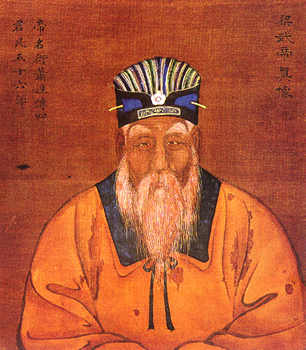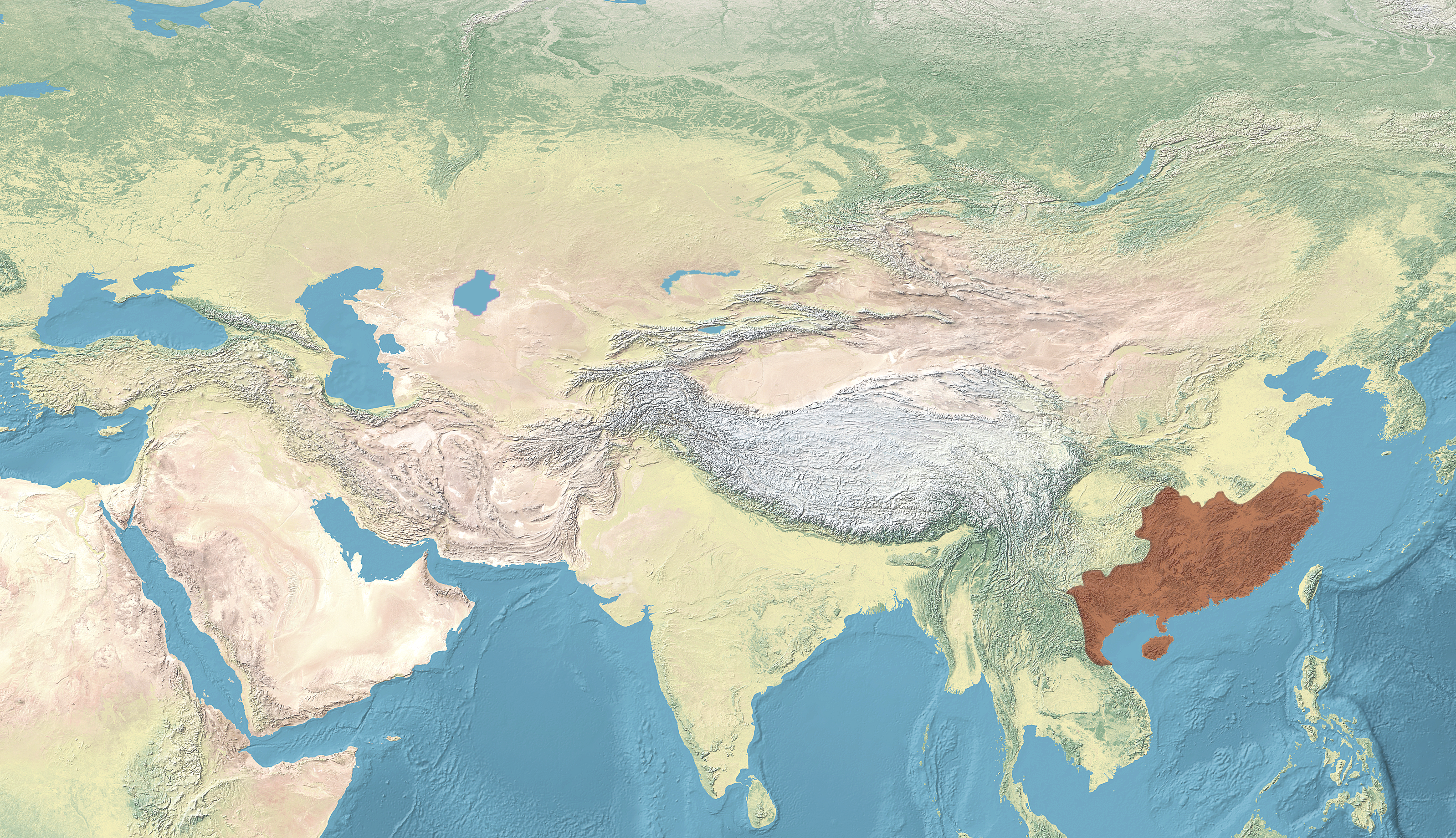|
Empress Dowager Xia
Empress Dowager Xia (夏太后), possibly Xia Wangfeng (夏王豐),See ''Yiwen Leiju'', vol. 85 uotation from a submission Xiao Yi wrote to thank his brother the Crown Prince (i.e., either Xiao Tong or Emperor Jianwen of Liang, Xiao Gang) for gift given to his concubine Xia Wangfeng, who might be the later Empress Dowager Xia]. was an empress dowager of the History of China, Chinese Liang dynasty. She was the mother of Emperor Jing (Xiao Fangzhi). The future Empress Dowager Xia was from Kuaiji Commandery on the southern shore of Hangzhou Bay. Sometime between 520 and 527, she became a concubine of Xiao Yi the Prince of Xiangdong, a son of Liang's founder Emperor Wu. In 544, Empress Dowager Xia and Xiao Yi had a son, Xiao Fangzhi. After Xiao Yi declared himself emperor in 552 (as Emperor Yuan), he created Xiao Fangzhi the Prince of Jin'an, and he honored Consort Xia as the Princess Dowager of Jin'an. She also carried the imperial consort rank ''guifei'' (貴妃), the first ... [...More Info...] [...Related Items...] OR: [Wikipedia] [Google] [Baidu] |
Yiwen Leiju
The ''Yiwen Leiju'', or translated as ''Encyclopedia of Literary Collections'', is a Chinese '' leishu'' encyclopedia completed by Ouyang Xun in 624 under the Tang dynasty The Tang dynasty (, ; zh, c=唐朝), or the Tang Empire, was an Dynasties of China, imperial dynasty of China that ruled from 618 to 907, with an Wu Zhou, interregnum between 690 and 705. It was preceded by the Sui dynasty and followed .... Other contributors include Linghu Defen and Chen Shuda. ''Yiwen Leiju'' is divided into 47 sections and many subsections, covering a vast number of subjects and including many quotations from older works, which are well cited. Wilkinson, '' Chinese history: a manual'', p. 603. File:ZHSY000250 藝文類聚一百卷 (唐)歐陽詢 輯 宋刻本.pdf, page=301, Pages from a Southern Song dynasty Shaoxing period edition of the ''Yiwen Leiju'', from the Shanghai Library File:Harvard drs 54163990 藝文類聚 v.20.pdf, page=51, Pages from a Ming dynasty Jiajing pe ... [...More Info...] [...Related Items...] OR: [Wikipedia] [Google] [Baidu] |
Emperor Wu Of Liang
Emperor Wu of Liang () (464 – 12 June 549), personal name Xiao Yan (蕭衍), courtesy name Shuda (叔達), childhood name Lian'er (練兒), was the founding Emperor of China, emperor of the Chinese Liang dynasty, during the Northern and Southern dynasties period. His reign, until its end, was one of the most stable and prosperous among the Southern dynasties. He came from the same Xiao clan of Lanling (蘭陵蕭氏) that ruled the preceding Southern Qi, Southern Qi dynasty, but from a different branch. Emperor Wu established universities and extended the Confucian civil service exams, demanding that sons of nobles (士族) study. He was well read himself and wrote poetry and patronized the arts. Although for governmental affairs he was Confucian in values, he embraced Buddhism as well. He himself was attracted to many Indian traditions. He banned the sacrifice of animals and was against execution (legal), execution. It was said that he received the Buddhist precepts during his r ... [...More Info...] [...Related Items...] OR: [Wikipedia] [Google] [Baidu] |
Chen Dynasty People
Chen or Ch'en may refer to: People *Chen (surname) (陳 / 陈), a common Chinese surname *Chen (singer) (born 1992), member of the South Korean-Chinese boy band EXO * Chen Chen (poet) (born 1989), Chinese-American poet * (), a Hebrew first name or surname: ** Hen Lippin (born 1965), former Israeli basketball player ** Chen Kugel (born 1962), Israeli pathologist who did an autopsy on Yahya Sinwar ** Chen Reiss (born 1979), Israeli operatic soprano ** Ronen Chen (born 1965), Israeli fashion designer Historical states *Chen (state) (c. 1045 BC–479 BC), a Zhou dynasty state in present-day Anhui and Henan *Chen (Thessaly), a city-state in ancient Thessaly, Greece * Chen Commandery, a commandery in China from Han dynasty to Sui dynasty *Chen dynasty (557–589), a Chinese southern dynasty during the Northern and Southern dynasties period Businesses and organizations * Council for Higher Education in Newark (CHEN) * Chen (), acronym in Hebrew for the Women's Army Corps (, ) a ... [...More Info...] [...Related Items...] OR: [Wikipedia] [Google] [Baidu] |
Liang Dynasty Empresses Dowager
Liang may refer to: Chinese history * Liang (state) (梁) (8th century BC – 641 BC), a Spring and Autumn period state * Wei (state) (403–225 BC), a Warring States period state, also known as Liang (梁) after moving its capital to Daliang ** Kaifeng, a city formerly known as Daliang (大梁) ** Liang (realm) (梁), a fief held by various princes under imperial China * Liang (Han dynasty kingdom) (梁), a kingdom/principality in the Han dynasty * Liang Province (涼州), an administrative division in ancient China covering present-day Gansu, Ningxia, and parts of Qinghai, Xinjiang, and Inner Mongolia * Former Liang (涼) (320–376), one of the Sixteen Kingdoms * Later Liang (Sixteen Kingdoms) (涼) (386–403), one of the Sixteen Kingdoms * Southern Liang (Sixteen Kingdoms) (涼) (397–414), one of the Sixteen Kingdoms * Northern Liang (涼) (397–439), one of the Sixteen Kingdoms * Western Liang (Sixteen Kingdoms) (涼) (400–421), one of the Sixteen Kingdoms * Liang dyn ... [...More Info...] [...Related Items...] OR: [Wikipedia] [Google] [Baidu] |
Zizhi Tongjian
The ''Zizhi Tongjian'' (1084) is a chronicle published during the Northern Song dynasty (960–1127) that provides a record of Chinese history from 403 BC to 959 AD, covering 16 dynasties and spanning almost 1400 years. The main text is arranged into 294 scrolls (), each equivalent to a chapter—totaling around 3 million Chinese characters. In 1065, Emperor Yingzong of Song commissioned his official, Sima Guang (1019–1086), to lead a project to compile a Universal history (genre), universal history of China, and granted him funding and the authority to appoint his own staff. His team took 19 years to complete the work and in 1084 it was presented to Emperor Yingzong's successor Emperor Shenzong of Song. It was well-received and has proved to be immensely influential among both scholars and the general public. Endymion Wilkinson regards it as reference quality: "It had an enormous influence on later Chinese historical writing, either directly or through its many a ... [...More Info...] [...Related Items...] OR: [Wikipedia] [Google] [Baidu] |
New Book Of Tang
The ''New Book of Tang'', generally translated as the "New History of the Tang" or "New Tang History", is a work of official history covering the Tang dynasty in ten volumes and 225 chapters. The work was compiled by a team of scholars of the Song dynasty, led by Ouyang Xiu and Song Qi. It was originally simply called the ''Tangshu'' (唐書, Book of Tang) until the 18th century. History In Chinese history, it was customary for dynasties to compile histories of their immediate predecessor as a means of cementing their own legitimacy. As a result, during the Later Jin (Five Dynasties), Later Jin dynasty of the Five Dynasties and Ten Kingdoms period, a history of the preceding Tang dynasty, the ''Old Book of Tang'' () had already been compiled. In 1044, however, Emperor Renzong of Song ordered a new compilation of Tang history, based on his belief that the original ''Old Book of Tang'' lacked organization and clarity. The process took 17 years, being finally completed in 1060. ... [...More Info...] [...Related Items...] OR: [Wikipedia] [Google] [Baidu] |
Chen Dynasty
The Chen dynasty (), alternatively known as the Southern Chen (南陳 / 南朝陳) in historiography, was a Dynasties in Chinese history, Chinese imperial dynasty and the fourth and last of the Northern and Southern dynasties#Southern dynasties, Southern dynasties during the Northern and Southern dynasties period. Following the Liang dynasty, the Chen dynasty was founded by Emperor Wu of Chen, Chen Baxian (Emperor Wu). The Chen dynasty further strengthened and revitalized the economy and culture of southern China, and made territorial expansions northward, laying the foundation for future dynasties. It was conquered by the Sui dynasty in 589, marking an end to the Northern and Southern dynasties period in Chinese history. The descendants of the Chen imperial family continued to hold powerful high-ranking positions in the imperial courts of both the Sui and Tang dynasty, Tang dynasties. History Founding and expansion: Chen Baxian In the twilight of the Liang dynasty (548–55 ... [...More Info...] [...Related Items...] OR: [Wikipedia] [Google] [Baidu] |
Emperor Wu Of Chen
Emperor Wu of Chen (; 503– 9 August 559), personal name Chen Baxian (陳霸先), courtesy name Xingguo (興國), childhood name Fasheng (法生), was the founding emperor of the Chen dynasty of China. He first distinguished himself as a Liang dynasty general during the campaign against the rebel general Hou Jing, and he was progressively promoted. In 555, he seized power after a coup against his superior, the general Wang Sengbian, and in 557 he forced Emperor Jing of Liang to abdicate the throne to him, thereby establishing the Chen dynasty. He died in 559, and as his only surviving son Chen Chang was held by the Northern Zhou dynasty, he was succeeded by his nephew Chen Qian (Emperor Wen). Background and early career Chen Baxian was born to Chen Wenzan (陳文讚) and Lady Dong in 503, the second year of the reign of Emperor Wu of Liang (the founding emperor of Liang dynasty). He was from Wuxing Commandery (吳興, roughly modern Huzhou, Zhejiang). His family traced its ... [...More Info...] [...Related Items...] OR: [Wikipedia] [Google] [Baidu] |
Western Wei
Wei (), known in historiography as the Western Wei (), was an imperial dynasty of China that followed the disintegration of the Northern Wei. One of the Northern dynasties during the era of the Northern and Southern dynasties, it ruled the western part of northern China from 535 to 557. As with the Northern Wei dynasty that preceded it, the ruling family of the Western Wei were members of the Tuoba clan of the Xianbei. History After the Xianbei general Yuwen Tai killed the Northern Wei emperor Yuan Xiu, he installed Yuan Baoju as emperor of Western Wei while Yuwen Tai would remain as the virtual ruler. Although smaller than the Eastern Wei in territory and population, Western Wei was able to withstand the attacks from the eastern empire, most notably at the Battle of Shayuan in 537. Due to its better economical conditions, Western Wei was even able to conquer the whole western part of the Liang empire in the south and occupied the territory of modern Sichuan. In 557 Yuwen Ta ... [...More Info...] [...Related Items...] OR: [Wikipedia] [Google] [Baidu] |


